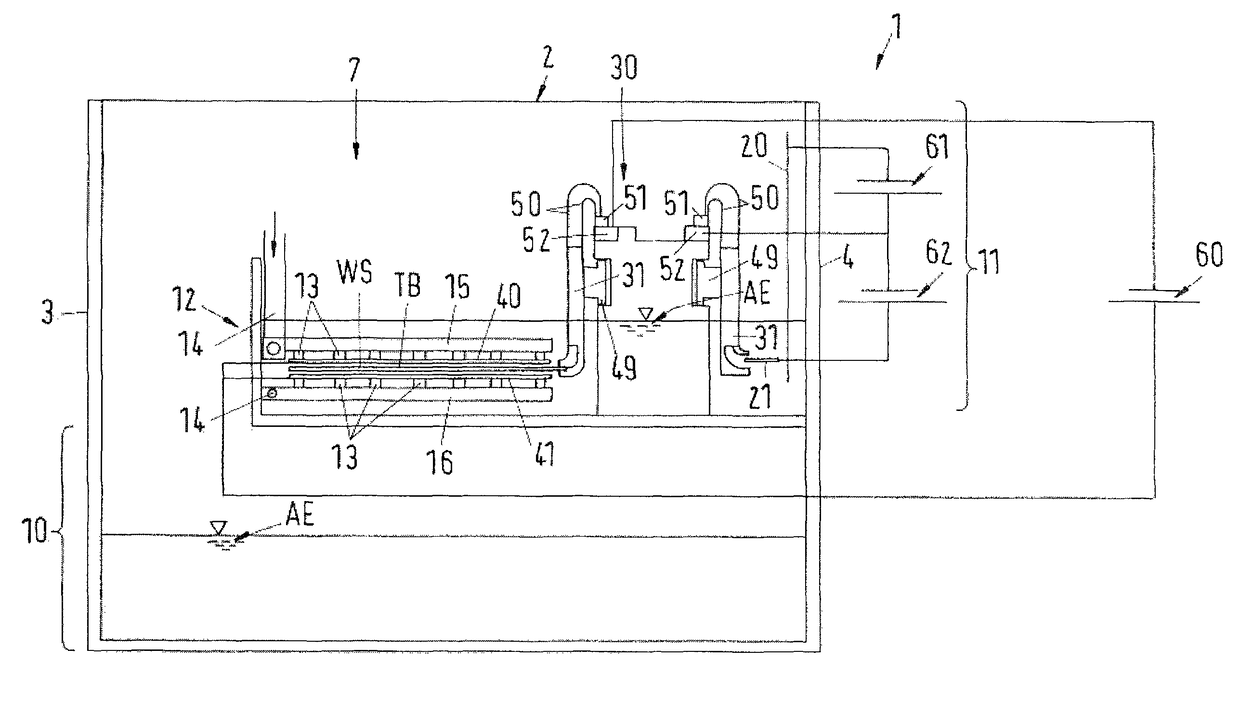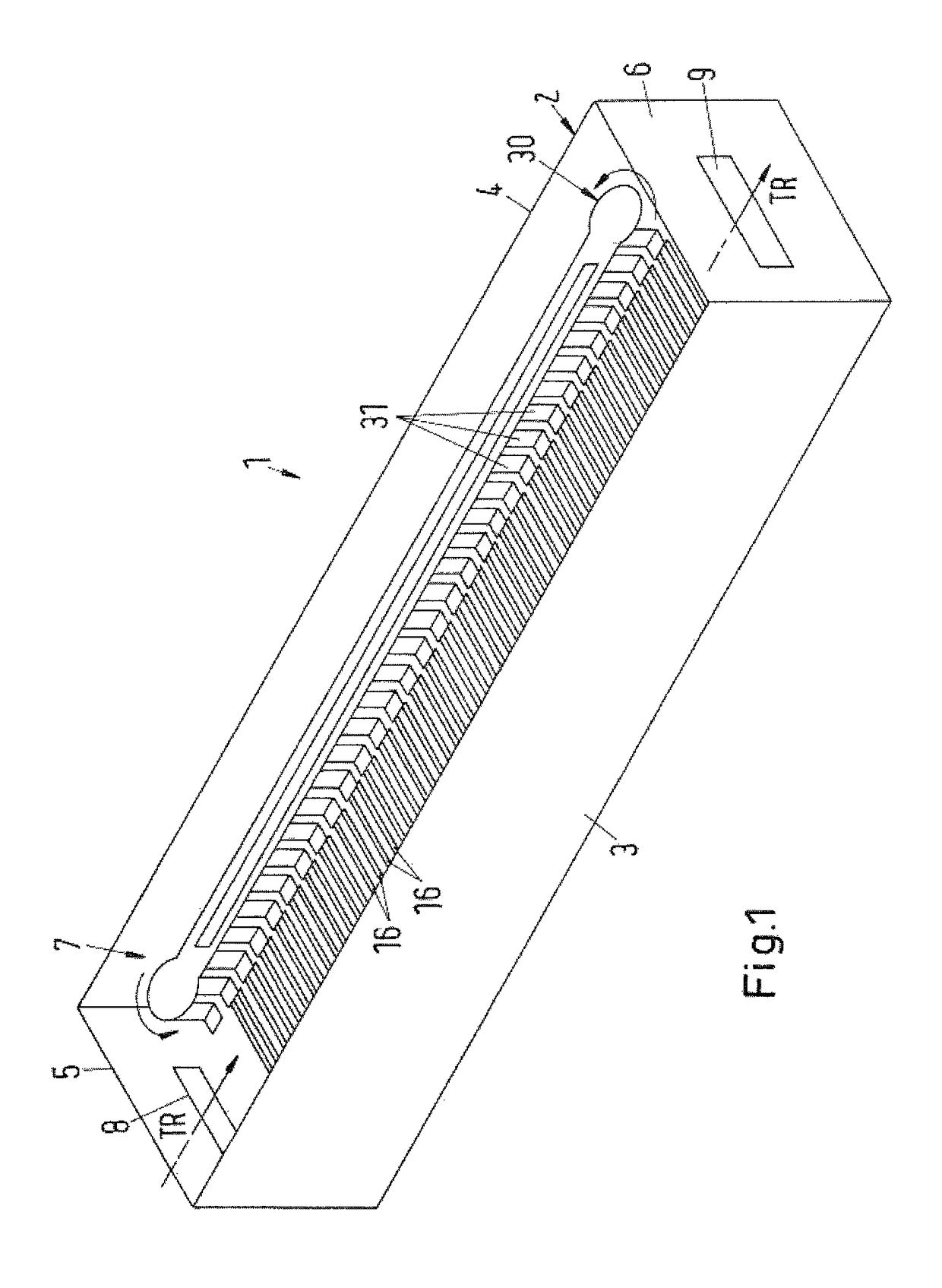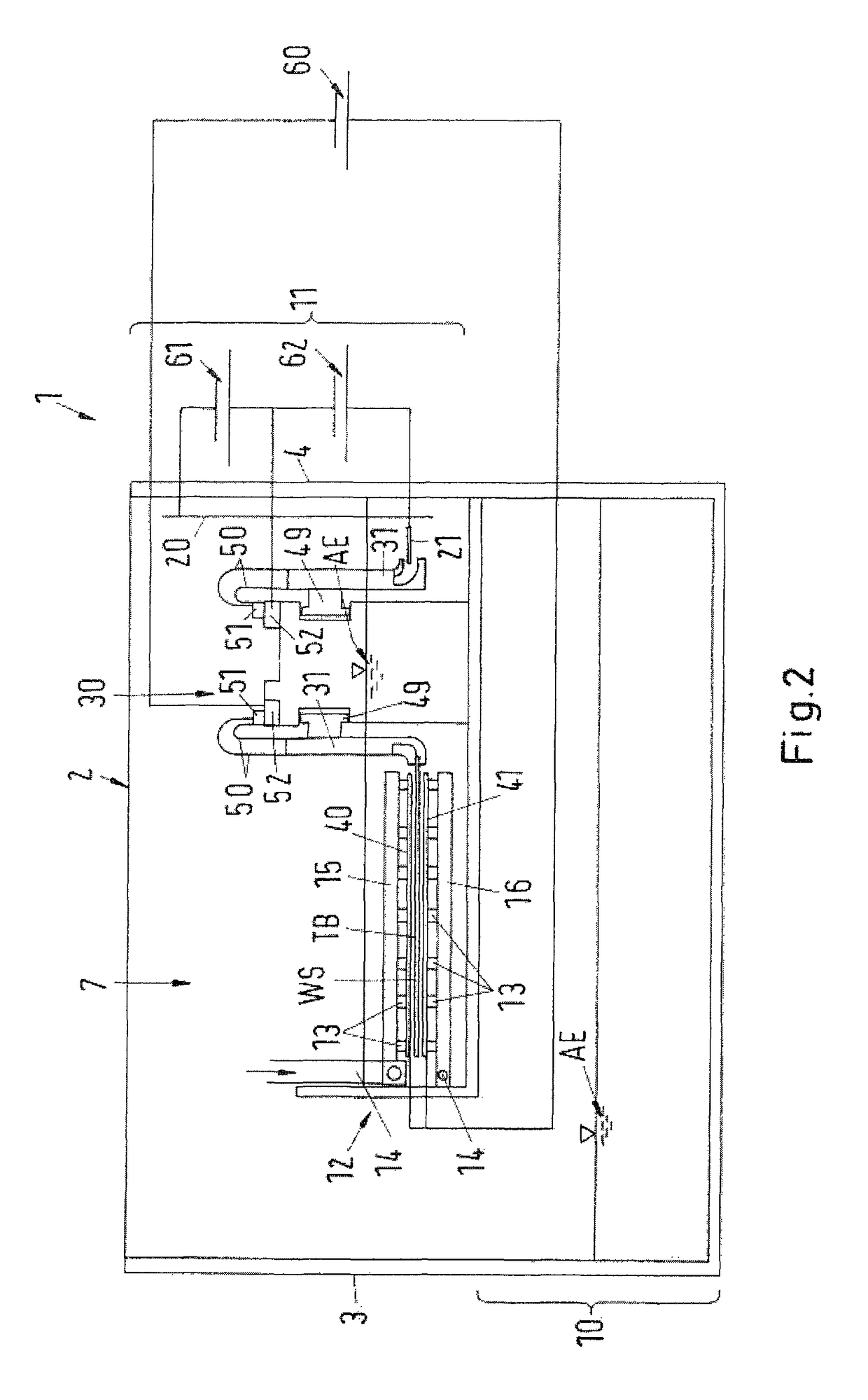Method and apparatus for electrolytically depositing a deposition metal on a workpiece
a technology of electrolytic depositing and workpiece, which is applied in the direction of electrolysis components, contacting devices, cell components, etc., can solve the problems of unsuitable current transfer and damage to electrical contact elements of current feeders, and achieve the effect of high curren
- Summary
- Abstract
- Description
- Claims
- Application Information
AI Technical Summary
Benefits of technology
Problems solved by technology
Method used
Image
Examples
Embodiment Construction
[0058]Identical reference signs in the figures designate elements having the same function.
[0059]The continuous apparatus 1 illustrated in FIGS. 1, 2 and 3 serves for the continuous electrolytic deposition of metal on workpieces WS, here printed circuit boards. The apparatus 1 can serve for example for depositing copper. A copper deposition electrolyte is used in this case.
[0060]Installations 1 of this type have a housing 2 having a front wall 3, a rear wall 4, an entry wall 5 for the printed circuit boards WS, an exit wall 6 for the printed circuit boards, and a cover (not illustrated), which together define an interior 7.
[0061]The housing 2 is vertically divided into two: a reservoir for a deposition electrolyte AE is situated in a lower compartment 10 (“sump”). An upper compartment 11 is formed by a trough 12, in which the deposition electrolyte AE can likewise be held. Situated in this region is a transport path TB for the printed circuit boards WS that are conveyed through the ...
PUM
| Property | Measurement | Unit |
|---|---|---|
| thickness | aaaaa | aaaaa |
| currents | aaaaa | aaaaa |
| thickness | aaaaa | aaaaa |
Abstract
Description
Claims
Application Information
 Login to View More
Login to View More - R&D
- Intellectual Property
- Life Sciences
- Materials
- Tech Scout
- Unparalleled Data Quality
- Higher Quality Content
- 60% Fewer Hallucinations
Browse by: Latest US Patents, China's latest patents, Technical Efficacy Thesaurus, Application Domain, Technology Topic, Popular Technical Reports.
© 2025 PatSnap. All rights reserved.Legal|Privacy policy|Modern Slavery Act Transparency Statement|Sitemap|About US| Contact US: help@patsnap.com



